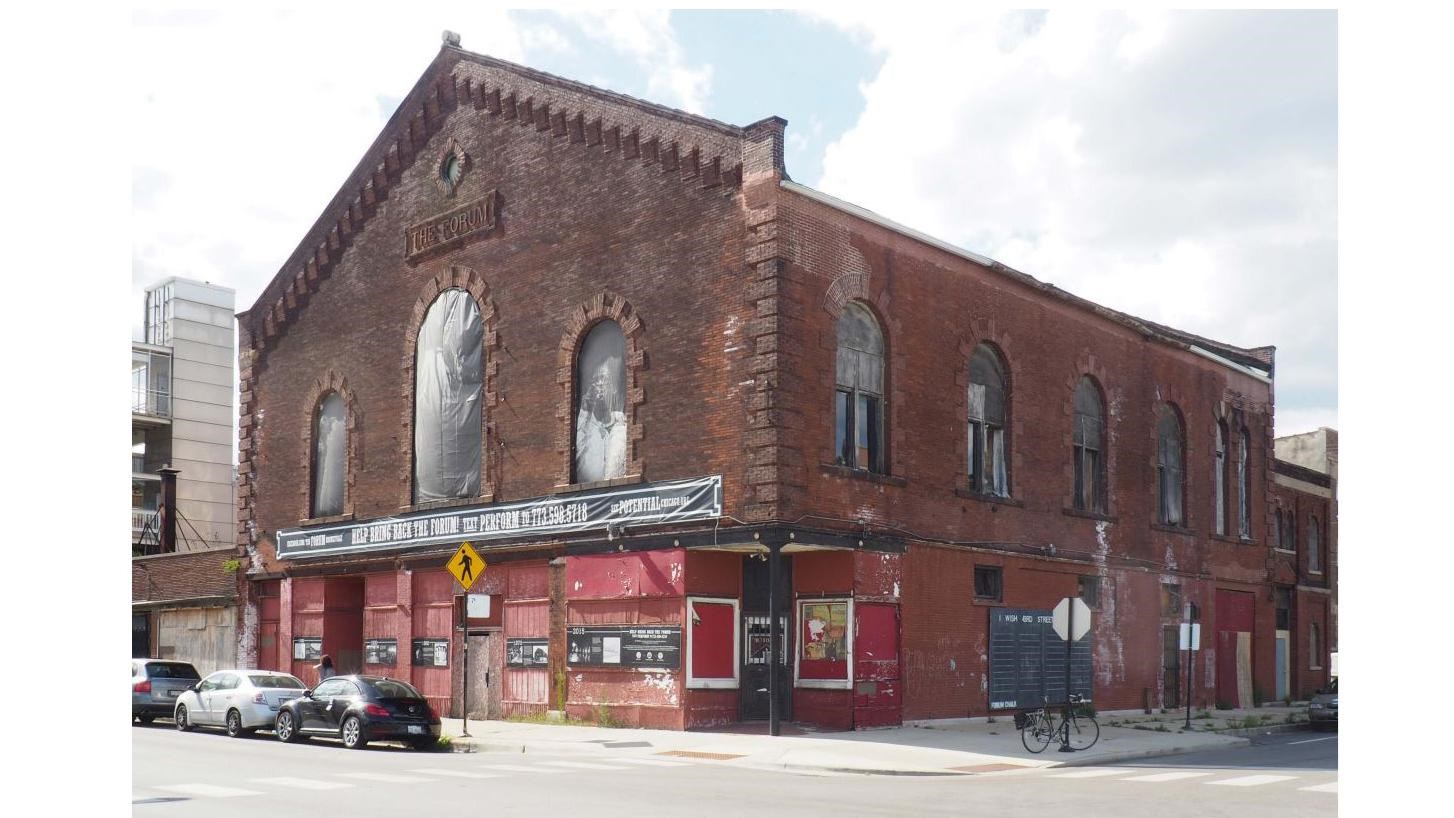Last updated: July 1, 2021
Place
Forum Hall

Photograph by Erica Ruggiero, courtesy of Illinois State Historic Preservation Office
Quick Facts
Location:
Chicago, Illinois
Significance:
Entertainment Recreation, Politics/Government, Social History, Architecture
Designation:
Listed in the National Register – Reference number 100003646
MANAGED BY:
The Forum Hall in Chicago, Illinois was listed on the National Register of Historic Places in 2019. Constructed in 1897, the Forum is representative of a late nineteenth century meeting and social hall. It served as the heart of the Grand Boulevard community’s society, culture, and commerce. The Forum’s period of significance expands from its construction date, until 1969. The building was designed by prominent local architect Samuel Atwater Treat, also known for his design of St. Luke’s Hospital (Chicago). The initial construction of the building is composed of the main block which includes: the red brick two-story hall and stores section, and one-story commercial section which fronts 43rd Street. In 1900, the property was expanded with a three-story addition at the northwest corner of the main block. The building ranged in use and space as a community center for events from political campaigns, ward mass meetings, and speeches by Oscar Stanton de Priest and Dr. Emil G. Hirsch; performances by Nat King Cole, Tiny Parham, and the Johnny Long Orchestra; to Civil Rights activities such as the Chicago Scottsboro Defense Conference and the “Negroes in major leagues” movement.While the Forum was built for the initial citizens of the community, wealthy, as well as middle-and working-class American-born whites of Irish, Scottish, and English descent, German Jews, and a small African-American population, it seamlessly became a meaningful part of daily life for Black Metropolis which developed at the beginning of the twentieth century. By the 1920s, the Great Migration had brought an influx of African Americans to Chicago’s South Side. Soon after, the 43rd Street corridor became part of the core of the jazz and blues music scenes of Chicago. While the demographics of the community changed over the course of the period of significance, the Forum’s use remained consistent and central facility to the community.
